#mihrimah sultan daughter of mustafa iii
Explore tagged Tumblr posts
Note
Excuse me, but I also think that Murad and Safiye did not have a daughter named Mihrimah.
The problem of your work as a historian is that you only pay attention to the writings of the ambassadors and ignore the documents of the harem.
In Mustafa Altun's book, (Yüzyıl Dönümünde Bir Valide Sultan: Safiye Sultan'ın Hayatı ve Eserleri) the rights of women in the sultan's court are specified in the final pages of the book. It is mentioned how much Sultan's sisters and cousins received. Even the names of the Sultan's four children, Mehmed, Mahmud, Ayşe and Fatma, are mentioned, but there is no name of another child.
It is more interesting that this information covers up to 1582. If Safiye had another child, most likely they would have died in infancy. If she was an older girl, her name would definitely be mentioned in the list of harem women. If Safiye had another daughter, Ahmad would have named her on one of his daughters, as he did with the others.
The previously mentioned ambassadors each say the opposite. One says that the Sultan has one daughter, while the other says that the Sultan has two daughters. It is clear that not all ambassadors could have correct information about the Sultan's family.
I think the problem of my work as a historian is that you guys ask about stuff that actual historians find in a lifetime while I have to answer in a couple of weeks. Also, I don’t have harem registers at hand and I cannot fly to Istanbul to look at them. In short, I’m doing my best with the sources I have on my pc.
I have my problems with those harem registers because while I appreciate them for showing us that Bayezid’s daughter Hatice went back to the harem at some point in her life (probably after a marriage), I don’t see Mihrimah (Süleyman and Hürrem’s daughter), who was alive in 1576:

In the top part there’s Murad III’s immediate family, so Safiye and his sons (Ayse and Fatma weren’t born yet). In the middle part we have expenses for clothes, but in the bottom part we have those who ate at the imperial kitchen and it seems strange to me that Mihrimah is not included. Also, where is Fatma binti Selim II? She was alive at the time.
Ironically, Fatma reappears after her supposed death (1580) in harem registers dated 1581-82. Either this is a mistake by the harem clerk or she didn't die in 1580 after all.

On the other hand Şah has disappeared because she truly died in 1580, it seems.
It it interesting that a historian like Uluçay missed these harem registers where Fatma is considered alive in 1581-82.
On the other hand, maybe these harem registers are not complete. Or they’re wrong.
In any case, a Mihrimah Sultan binti Murad III definitely existed, and maybe Mehmed Sureyya was wrong when he said that she was the eldest when Murad died. Or maybe we were wrong and she was the eldest when she died, therefore moving her date of birth forward.
EDIT: Fatma Sultan binti Selim II died on 24 June 1590, according to Seyyid Lokmân, Mustafa Selaniki, and İsmail Hâmi Danişmend (Lokmân and Selaniki were contemporaries). Mehmed Süreyya's Şaban 988 instead of Şaban 998 seems just an oversight. Thanks to @rhaenahanzades and @kehribar-sultan for pointing it out.
12 notes
·
View notes
Text
Sultanate of Women (3/7)
Afife Nurbanu Sultan (c.1525/ 7 December 1583)
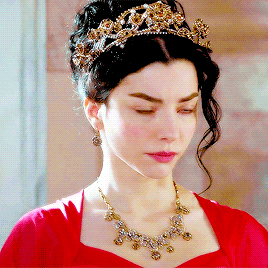
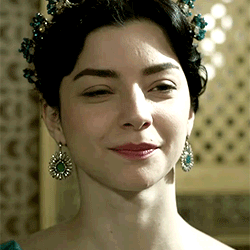
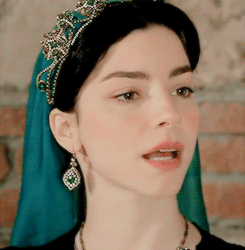
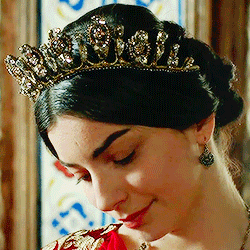
Daughter of Nicolo Venier and Violanta Baffo
Haseki Sultan (Legal Wife) of Sultan Selim II and Valide Sultan of Sultan Murad III
Mother of Sultan Murad III, Sah Sultan, Ismihan Sultan, Gevherhan Sultan, and Fatma Sultan
Grandmother of Sultan Mehmed III, Sehzade Mahmud, Sehzade Mustafa, Sehzade Oman, Sehzade Bayezid, Sehzade Selim, Sehzade Cihangir, Sehzade Abdullah, Sehzade Ahmed, Sehzade Yakub, Sehzade Alemsah, Sehzade Yusuf, Sehzade Hüseyin, Sehzade Korkud, Sehzade Ali, Sehzade Ishak, Sehzade Alaeddin, Sehzade Davud, Sehzade Suleiman, Sehzade Yahya, Hümasah Sultan, Ayse Sultan, Fatma Sultan, Mihrimah Sultan, Rukiye Sultan, Mihriban Sultan, and Fahriye Sultan.
Mother-in-law of Çakırcıbaşı Hasan Pasha, Zal Mahmud Pasha, Sokullu Mehmed Pasha, Kalaylıkoz Ali Pasha, Safiye Sultan, Piyale Pasha, Cerrah Mehmed Pasha, and Kanijeli Siyavuş Pasha
Fun Fact For Newbies: Nurbanu Sultan was born Cecilia Venier-Baffo
47 notes
·
View notes
Text
Portraits of the daughters of Murad III / Murad III lányainak portréja
Sultan Murad III has had at least 28 daughters born in his lifetime, but only a few of them are known by their names. Most of his daughters are lost in history as they died young or simply were insignificants in the political fields. During the epidemic of 1597-98, at least 17 daughters of Murad died. His two best-known daughters are Ayşe and Fatma, who were born from his favorite concubine, Safiye Sultan, but there were more daughters of his.

Ayşe Sultan
The exact birth-date of Ayşe is unknown, but she was most likely the eldest daughter of later Murad III and Safiye Sultan, so she was born between 1565 and 1570. She spent her childhood in her father's province of Manisa, until in 1574 her grandfather Selim II died. Then, following her father, she moved to Istanbul and settled in Topkapi Palace. Ayşe, together with her siblings, essentially grew up there, under the strict supervision of her mother and grandmother. There is no information about Ayşe’s relationship with her mother or grandmother, but her personality and nature make it likely that her grandmother, Nurbanu, played an important role in her upbringing. Moreover, we must not forget that Nurbanu wanted to marry Ayşe very hardly to her adoptive son. So maybe she liked Ayşe very much? Anyhow, in the end, the marriage did not happen.
The 1580s brought a big change in the life of Ayşe. Her mother and grandmother became tenser and tenser to each other and there was an increasingly fierce struggle between them. It finally peaked in 1583 when her mother was exiled from Topkapi Palace. According to some sources, Ayşe and her sisters accompanied Safiye to the Old Palace and spent the next roughly two years there. It is not known how this exile affected the relationship between Ayşe and her father. When her grandmother, Nurbanu, passed away, her mother gradually returned to the sultan’s grace and soon Safiye could plan her own and her daughter's wedding. Sultan Murad wanted to marry Safiye and marry off his daughter Ayşe to one of his trusted men.
Her first marriage took place in 1586, to Ibrahim Pasha, the beylerbey of Egypt. The wedding took place with huge celebrations which lasted for a week. Ayşe finally could be in the spotlight for a while after her exile in recent years. Soon, however, she moved to Egypt with her husband. Ibrahim Pasha was out of favor during Murad's reign, but with Murad's death his star began to rise the brother of Ayşe, Mehmed III, named his Grand Vezier three times. Thus Ayşe was able to live in the capital again, close to her family. Ibrahim Pasha died on July 10, 1601, and Ayşe was widowed. The pasha was buried in the Şehzade Mosque Complex along with his two children, a boy and a girl who most probably were the children of Ayşe and the pasha, but they died as infants.
However, she could not enjoy her widowhood for long. In April 1602, Ayşe was remarried, this time to Yemişci Hasan Pasha. Ayşe had no intention of marrying the pasha at all because the man was known as a tough man who was rude and ignorant. Despite all her resentment, under the pressure of her mother, the marriage happened but was a short-lived one. Yemişci Hasan Pasa soon fell out of the favor of the sultan (or rather the favor of Safiye) and was sentenced to death. Ayşe pleaded her mother and the sultan to spare her husband’s life and allow them to go on a pilgrimage to purify themselves or go into voluntary exile to Egypt. However, the sultan refused his sister’s request and told her that if she clung so much to her husband, she could follow him to death. It is not known whether Ayşe ended up begging for her husband’s life out of a sense of duty or she started to like him in the meantime. Yemişci Hasan Pasha hid in Ayşe's palace, but was found and executed on October 18, 1603, and Ayşe was widowed again. Somewhat nuanced the romantic image of Ayşe begging for her husband’s life, that some say she fell in love with Güzelce Mahmud Pasha when her husband was still alive. This Güzelce Mahmud pasha did his best to execute Yemişci Hasan Pasha. Güzelce Mahmud Pasa tried to forge his own fortune in this way and in the end he managed it.
Sultan Mehmed III soon passed away, so Ayşe was married off by her nephew, Ahmed I, this time to Güzelce Mahmud Pasha, her lover in 1604. This marriage did not last long either, as Ayşe died on 15 May 1605. She has done a lot of charity during her short life. In 1603, she established a fountain in the garden of the Şehzade Mosque complex in memory of her first husband, as well as a fountain in other parts of the capital and had a bridge built in the countryside. She also explained in detail in her testament how she wanted to help people even after her death. According to her will, she freed all her servants; 10,000 akces were set aside to be paid for those in prison for debt; she sacrificed 2,000 akces to help the needy, the sick, the poor, and orphans; she wished to distribute the remainder among the poor of Mecca, Medina, and Jerusalem; and she sacrificed a certain amount to set free the imprisoned Muslims during the wars, on the proviso that the female prisoners must be set free first. She was buried in her father’s mausoleum at Aya Sofiya.

Fatma Sultan
The exact date of Fatma's birth is unknown, but it is certain that she was younger than Ayşe, and perhaps even Mehmed. She was most likely born between 1570 and 1575. Like her sister, she was the child of the later Sultans Murad III and Safiye. She spent the first few years of her life in her father's province of Manisa, then moved to Istanbul in 1574 when her father became a sultan. Her mother's exile in 1583 brought serious changes in her life, as she probably accompanied her mother, Safiye, to the Old Palace along with her sisters. Soon, however, they returned to the sultan's favor and were able to go home to Topkapi Palace.
On December 8, 1593, her father married off her to Admiral Halil Pasha in a huge ceremony. The ambassadors made detailed descriptions of the wedding ceremony. The marriage turned out to be a happy one, Fatma and Halil Pasha fit together perfectly, and they also tried to support Safiye Sultan in her intrigues. In 1595 the head of the fleet, Halil Pasha, did not left Istanbul with his fleet because Fatma was pregnant and wanted her husband to be by her side. This also suggests that it was a good marriage and that Safiye liked Halil. From their marriage, a child was born in the fall of 1595, Sultanzade Mahmud Bey, who died in 1598, presumably as a result of an epidemic. Halil Pasha died in 1603 and Fatma was widowed.
Some sources say she was married to Cafer Pasha, a vizier, shortly after Halil Pasha’s death, but others dispute this. Then in 1604 his nephew, Ahmed I, married her off to Hızır Pasha. The exact time of Fatma's death is disputed, but she probably died in early 1620. She was buried in hwe father’s mausoleum at Aya Sofiya as her sister Ayşe.

Hüma / Hümaşah Sultan
Hümaşah was also the daughter of the late Murad III and was born in his Manisa province, which is why historians conclude that she was also Safiye’s daughter, so she is the full-sister of Ayşe and Fatma. She was named after Murad’s cousin, Hümaşah, who presented Safiye to Murad in the past. This fact also suggests that Hümaşah was the daughter of Safiye. Some sources believed for years that she became the wife of Sokolluzade Lala Mustafa Pasha before 1580, based on which it was thought that she was the first child ot Murad and Safiye. However, it is now certain that she was only mistaken with Hümaşah, the daughter of Şehzade Mehmed (son of Hürrem), who was truly the wife of Sokolluzade Lala Mustafa Pasha. Thus, it is certain that Hümaşah married only once in her life, to Nişar Mustafazade Mehmed Pasha, but the date of the wedding is unknown. However, Hümaşah was never mentioned once after the pasha's death in 1586, nor was she included in the harem registers, which clearly suggests that she died in the 1580s.

Fahriye Sultan
Murad III ended his monogamous relationship with Safiye around 1583 and accepted dozens of concubines from then on. One anonymous concubine gave birth to Fahriye Sultan between 1585 and 1590. Fahriye's first marriage took place only after the death of her father, by her nephew - who was about the same age as her - Ahmed I, who married her to Çuhadar Ahmed Pasha in 1604. Others say Bosnian Sofu Bayram Pasha was her husband. In 1618 she was widowed and retired to the Old Palace. She never remarried and lived her remaining years within the walls of the Old Palace before she died in 1641 (or after).

Rukiye Sultan
The names of most of Murad III’s new concubines did not survive, but Rukiye’s mother did. Her name was Şemsiruhsar Hatun, who established a foundation during her lifetime and died around 1613. Rukiye may have been born in Murad's last years, as her first marriage did not take place until 1613. Nakkaş Haşan Pasha was chosen as a groom by Sultan Ahmed. The pasha was the leader of the Janissaries, and later the governor of Rumelia and Kubbe Vizier. It is not known whether any child was born from this marriage or not. Also, no information has survived about their marriage. Rukiye is not mentioned at all after her husband's death in 1623, so it is possible that she died before her husband.

Mihrimah, Mihriban, Fetihye and Hatice
Mihrimah Sultan was born between 1585 and 1590 as the daughter of an anonymous concubine and Murad III. Her nephew, Ahmed I, married her to Mirahur Ahmed Pasha in 1604, but nothing else is known about her.
All that is known about Mihriban Sultan is that she married to Topal Mehmed Aga and was buried in her father’s mausoleum.
Fetihye Sultan and Hatice Sultan were also Murad's daughters, but no information remained about them.

Used sources: L. Peirce - The imperial harem; M. P. Pedani - Safiye's household and Venetian diplomacy; G. Börekçi - Factions and favourites at the courts of Sultan Ahmed I (r. 1603-17) and his immediate predecessors; Necdet Sakaoğlu - Bu Mülkün Kadın Sultanları
* * *
III. Murad szultánnak legalább 28 leánygyermeke született élete során, azonban csak néhányukról áll rendelekzésünkre kielégítő mennyiségű információ. Legtöbb lányának a neve sem maradt fenn és sokuk hunyt el fiatalon. Az 1597-98as időszak járványai során legalább 17 lánya hunyt például el. Két legismertebb lánya Ayşe és Fatma, akik kedvenc ágyasától, Safiye szultánától születtek.
Ayşe Sultan
Ayşe pontos születési ideje nem ismert, ám nagy valószínűséggel ő volt a legidősebb lánya III. Muradnak és Safiye szultánának, így 1565 és 1570 között jöhetett világra. Gyermekkorát apja maniszai tartományában töltötte, mígnem 1574-ben nagyapja II. Szelim elhunyt. Ekkor apját követve Isztambulba költöztek és a Topkapi Palotában rendezkedtek be. Ayşe testvéreivel együtt lényegében itt nőtt fel, anyja és nagyanyja szigorú felügyelete alatt. Nem maradt fenn információ arról, hogy Ayşe milyen viszonyban volt édesanyjával vagy nagyanyjával, személyisége és természete azonban valószínűsíti, hogy nagyanyja, Nurbanu szultána fontos szerepet töltött be nevelésében. Emellett nem szabad elfeljetünk azt sem, hogy Nurbanu komoly erőfeszítéseket tett, hogy az örökbefogadott fiához adhassa nőül Ayşét. Talán Ayşe közel állt Nurbanuhoz és emiatt akarta ennyire egy általa jó partinak tartott férfihoz nőül adni? Akárhogy is, végül a frigyből nem lett semmi.
Az 1580-as évek nagy változást hoztak Ayşe életébe is. Anyja és nagyanyja egyre inkább egymásnak feszültek és egyre kiélezettebb harc folyt köztük. Ez végül 1583-ban tetőzött, mikor édesanyját, Nurbanu szultána nyomására száműzték a Topkapi Palotából. Egyes források szerint Ayşe és húgai is Safiye szultánával tartottak a Régi Palotába és az elkövetkezendő nagyjából két évet ott töltötték. Nem tudni, hogy hogyan hatott ez a száműzetés Ayşe és apja viszonyára. Mikor nagyanyja, Nurbanu szultána elhunyt, édesanyja fokozatosan visszakerült a szultán kegyeibe és hamarosan anyjával közösen tervezhették az esküvőjüket. Murad szultán ugyanis feleségül kívánta venni Safiye szultánát, lányát Ayşét pedig ki akarta házasítani.
Első házasságára 1586-ban került sor, Egyiptom beglerbégjéhez, Ibrahim Pasához adták nőül. Az esküvő hatalmas ünnepségekkel zajlott és egy hétig tartott. Ayşe az elmúlt évek száműzetése után a középpontba kerülhetett egy időre. Hamarosan azonban férjével együtt Egyiptomba költözött. Ibrahim Pasa Murad uralkodása során kegyvesztett lett, azonban Murad halálával csillaga emelkedni kezdett és háromszor is viselhette a nagyvezíri posztot Ayşe bátyja, III. Mehmed mellett. Így Ayşe újra a fővárosban élhetett, közel családjához. Ibrahim Pasa 1601 július 10-én hunyt el, Ayşe pedig megözvegyült. A pasát a Şehzade mecsetkomplexumban helyezték örök nyugalomra két gyermekével együtt. Egy fiú és egy lány fekszik mellette, akik minden bizonnyal Ayşéval közös gyermekeik voltak és gyermekként elhunytak.
Özvegységét azonban nem élvezhette sokáig. 1602 áprilisában Ayşét újra férjhez adták, ezúttal Yemişci Hasan Pasához. Ayşének egyáltalán nem állt szándékában hozzámenni a pasához, mert a férfi kemény ember hírében állt, aki arcátlan és faragatlan volt. Minden ellenérzése ellenére is anyja nyomására a frigy megköttetett, ám rövidéletűnek bizonyult. Yemişci Hasan Pasa hamarosan kiesett a szultán (vagy inkább Safiye valide szultána) kegyeiből, amiért halálra ítélték. Ayşe szultána könyörgött édesanyjának és a szultánnak is, hogy kíméljék meg férje életét és engedjék, hogy zarándokútra menjenek, hogy megtisztulhassanak vagy önkéntes száműzetésbe vonuljanak Egyiptomba. A szultán azonban elutasította húga kérését és azt mondta neki, hogy ha ennyire ragaszkodik a férjéhez, akkor kövesse a halálba. Nem tudni, hogy Ayşe végül csak kötelességtudatból könyörgött férje életéért vagy időközben megszerette őt. Yemişci Hasan Pasa Ayşe palotájában rejtőzködött, ám kivégzői megtalálták és 1603 október 18-án kivégezték, Ayşe pedig újra megözvegyült. Némileg árnyalja a romantikus képet a férje életéért könyörgő Ayşéről az, hogy egyesek szerint még férje életében beleszeretett Güzelce Mahmud Pasába, aki önmaga is mindent megtett, hogy Yemişci Hasan Pasát kivégezzék. Güzelce Mahmud Pasa saját szerencséjét igyekezett ily módon kovácsolni.
III. Mehmed szultán hamarosan elhunyt, így a szultánát legközelebb unokaöccse, I. Ahmed házasította ki, ezúttal Güzelce Mahmud Pasához 1604-ben. Ez a házasság sem tartott sokáig, Ayşe ugyanis 1605. május 15-én elhunyt. Rövid élete során rengeteget jótékonykodott. 1603-ban a Şehzade-mecset komplexum területén létesített egy kutat első férje emlékére, valamint a főváros más részén is létrehozott egy kutat, vidéken pedig eg hidat építtetett. Végrendeletében is részletesen kifejtette, miképp szeretne halála után is segíteni az embereknek. Végrendelete szerint az összes szolgálóját felszabadíttatta; 10 000 akcét elkülönített arra, hogy a tartozás miatt börtönben ülőket kiváltsák; 2000 akcét arra áldozott, hogy a nélkülőzőket, betegeket, szegényeket és árvákat megsegítse; a maradékot Mekka, Medina és Jeruzsálem szegényei között óhajtotta szétosztani; egy bizonyos összeget pedig arra áldozott, hogy a háborúk során bebörtönzött muszlim fogjokat kiválthassanak, azzal a kitétellel, hogy először a női fogjokat kell kiváltani. Apja mauzóleumában helyezték örök nyugalomra az Aya Sofiyában.

Fatma Sultan
Fatma pontos születési ideje nem ismert, az azonban bizonyos, hogy Ayşénél fiatalabb volt, sőt talán Mehmednél is. 1570 és 1575 között születhetett legnagyobb valószínűség szerint. Nővéréhez hasonlóan a későbbi III. Murad és Safiye szultána gyermeke volt és első néhány évét apja maniszai tartományában töltötte, majd 1574-ben Isztambulba költözött, mikor apjából szultán lett. Életében komoly változásokat hozott anyja 1583-as száműzetése, ugyanis valószínűleg lánytestvéreivel együtt elkísérte anyját Safiyét a Régi Palotába. Hamarosan azonban vissza kerültek a szultán kegyeibe és hazatérhettek a Topkapi Palotába.
1593. december 8-án apja férjhez adta őt a tengernagy Halil Pasához hatalmas ünnepség keretei között. A házasság boldognak bizonyult, Fatma és Halil Pasa remekül összeillettek, Safiye szultánát is igyekeztek együtt támogatni annak intrikáiban. Boldog házasságukat és Safiye szultána támogatását jól bizonyítja, hogy 1595-ben a flotta feje, Halil Pasa nem utazott el a flottával együtt hadjáratra, ugyanis Fatma várandós volt és maga mellett akarta tudni férjét. Házasságukból egy gyermek született 1595 őszén, Sultanzade Mahmud bég, aki 1598-ban hunyt el, feltehetőleg járvány következtében. Halil Pasa 1603-ban elhunyt, Fatma pedig megözvegyült.
Egyes források szerint nemsokkal Halil Pasa halála után Cafer Pasához, egy vezírhez ment hozzá, mások azonban vitatják ezt. 1604-ben aztán unokaöccse, I. Ahmed házasította ki a szultánát Hızır Pasához. Fatma pontos halálozási ideje vitatott, ám valószínűleg 1620 elején halt meg. Apja mauzóleumában helyezték örök nyugalomra az Aya Sofiyában.

Hüma/Hümaşah Sultan
Hümaşah szultána is a későbbi III. Murad maniszai háremében született, emiatt következtetnek arra a történészek, hogy ő is Safiye lánya volt, így tehát Ayşe és Fatma édestestvére. Nevét minden bizonnyal Murad unokatestvére, Hümaşah után kapta, aki annak idején Safiye szultánát Muradnak ajándékozta. Ez a tény is arra enged következtetni, hogy Hümaşah Safiye lánya volt. Egyes források úgy vélték évekig, hogy Sokolluzade Lala Mustafa Pasa felesége lett még 1580 előtt, ez alapján őt gondolták későbbi III. Murad és Safiye első gyermekének. Azonban ma már bizonyos, hogy csupán Şehzade Mehmed (Hürrem fia) lányával Hümaşahval keverték össze, aki valóban Sokolluzade Lala Mustafa Pasa neje volt. Így bizonyos, hogy Hümaşah csak egyszer házasodott meg életében, Nişar Mustafazade Mehmed Pasával, ám ennek ideje nem ismert. Hümaşah azonban a pasa 1586-os halála után egyszer sem volt említve, nem szerepelt a hárem jegyzőkönyvekben sem, ami egyértelműen arra utal, hogy az 1580-as években elhunyt.

Fahriye Sultan
III. Murad 1583-tól kezdődően befejezte monogám kapcsolatát Safiye szultánával és több tucat ágyasnak is gyermeket nemzett. Egyik névtelen ágyas hozta világra Fahriye szultánát 1585 és 1590 között. Fahriye első házasságára csupán édesapja halála után került sor, nagybátyja - a vele nagyjából egykorú - I. Ahmed által, aki Çuhadar Ahmed Pasához adta nőül 1604-ben. Mások szerint a bosnyák Sofu Bayram Pasa vette el a szultánát. 1618-ban megözvegyült és a Régi Palotába vonult vissza. Sosem házasodott újra. A Régi Palota falai között élte le hátra lévő éveit, mielőtt 1641-ben (vagy utána) elhunyt.

Rukiye Sultan
III. Murad legtöbb új ágyasának neve nem maradt fenn, Rukiye anyjáé azonban igen. Şemsiruhsar Hatunnak hívták, aki élete során alapítványt hozott létre és 1613 körül hunyt el. Rukiye Murad utolsó éveiben születhetett, ugyanis első házasságára csupán 1613-ban került sor. Nakkaaş Haşan Pasát jelölte ki Ahmed szultán a szultána férjének, aki a janicsárok vezetője volt, majd később Rumélia helytartója és Kubbe vezír. Nem tudni, hogy született e gyermekük és a házasságukról sem maradt fenn információ. Rukiyét férje 1623-as halála után egyáltalán nem említik, így lehetséges, hogy már férje előtt elhunyt.

Mihrimah, Mihriban, Fetihye és Hatice
Mihrimah Sultan III. Murad és egy névtelen ágyas lányaként született 1585 és 1590 között. Unokaöccse, I. Ahmed házasította ki 1604-ben Mirahur Ahmed Pasához, ám semmi mást nem tudni róla.
Mihriban Sultanról annyit tudni, hogy Topal Mehmed Agához ment nőül és apja mauzóleumában helyezték örök nyugalomra.
Fetihye Sultan és Hatice Sultan is Murad lányai voltak, azonban semmi információ nem maradt fenn róluk.

Felhasznált források: L. Peirce - The imperial harem; M. P. Pedani - Safiye's household and Venetian diplomacy; G. Börekçi - Factions and favourites at the courts of Sultan Ahmed I (r. 1603-17) and his immediate predecessors; Necdet Sakaoğlu - Bu Mülkün Kadın Sultanları
16 notes
·
View notes
Quote
What we have is half a century of transition, at the heart of which the Haile-i Osmaniye is located, through which forces of change and continuity run concurrently; toward the second half of the seventeenth century, however, seniority was clearly seen to prevail. Another possible explanation for the survival and enthronement of Mustafa is the ascendancy of the valide sultan both in itself and at the expense of the haseki sultan. Peirce convincingly entitles Süleyman’s reign (1520 – 66) the age of the haseki and the period from Süleyman’s death to the emergence of the Köprülü grand vezirs (1566 –1656) that of the valide. These insightful observations, taken a step further, suggest that the haseki institution was less in congruity with the dynasty’s history than the overwhelming dominance of the valide. Also, we seem to have in the period 1520 –1656 a historical process in which personalities carry a substantial explanatory force. These are Kanuni Sultan Süleyman and his consort and then wife, Hürrem Sultan, at the beginning of the process and Kösem Sultan, haseki of Ahmed I and valide of Murad IV and Ibrahim I, at a crucial juncture. Rather than being the zenith of Ottoman civilization, as the traditional Orientalist narrative of a subsequent decline has framed it, Süleyman’s reign seems to have been, in certain respects, strewn with “irregularities,” among which the royal household seems to have figured prominently: for example, the unprecedented and never again repeated status of his beloved daughter Mihrimah. I think that the explanation of the rise of the haseki institution and its demise owes much to the particular personalities of Süleyman and Hürrem and to their relationship as the royal couple. At the risk of being simplistic, I would venture that the haseki institution and Hürrem's personality and the influence she wielded on Süleyman were inseparable. In a similar vein, though in a way more typical of the ruling house’s history, the explanation for the decline of the haseki and the re-emergence of the valide in the first decades of the seventeenth century has much to do with Kösem’s personality and the fact that in she had ceased being a haseki and, if she were to regain power, could obtain it only from the position of valide sultan. The woman who might have played a crucial role in Mustafa I’s survival was not his mother but his brother’s (Ahmed I’s) consort, Kösem Sultan. She must have realized the personal gain that might stem from the transition to seniority, coupled with the fact that she was no longer haseki but had sons “in waiting.” And indeed, according to the Venetian ambassador, Kösem 'lobbied to spare Mustafa the fate of fratricide with the ulterior goal of saving her own sons from the same fate.' Mustafa’s own valide, an Abkhasian consort of Mehmed III’s whose name is unknown, turned out to be, though not at all insignificant, no Kösem. From the revealing use Peirce makes of the privy purse registers to establish the harem’s institutional and personal hierarchies, it is evident that she was not one of the outstanding harem personalities of the period, like Nurbanu and Safiye earlier and Turhan later. However, while Mustafa’s mother may not have been as instrumental as Kösem in saving her son from fratricide, his mental state allowed her to assume center stage as regent, especially during his second, longer reign. From her location in the Old Palace she was a key figure in the deposition and assassination of Osman II and showed that she was no stranger to the art of damad (son-in-law) politics.
Taken from: An Ottoman Tragedy: History and Historiography at Play by Gabriel Piterberg
#historicalquotes#ottoman history#history#kosem sultan#hurrem sultan#halime sultan#quote#the statement of how Suleymanic period was irregular is so apt#it was also both the peak and transitory period in many ways IMO#more complex than different narratives (on any extreme) try to make it to be
33 notes
·
View notes
Photo

March 21, 1522 - The Birth of Mihrimah Sultan
Mihrimah was the only daughter of Sultan Suleiman the Magnificent and Hurrem Sultan. She was the second of five surviving children, with one older brother and three younger brothers, though it has been theorized that she had a twin brother who did not survive infancy. Mihrimah’s mother Hurrem Sultan was a concubine to Sultan Suleiman, but was freed and became Suleiman’s legal wife, or Haseki Sultan. This was an unprecedented move.
Mihrimah herself was married to Rustem, Governor of Diyarbakır, at the age of seventeen. Rustem would later become Grand Vizier of the Ottoman Empire. The marriage was not a happy one, though Mihrimah bore at least two children. Mihrimah was a great patroness of the arts during this time and sponsored the building of several mosques. Suleiman particularly favored Mihrimah and the two spent much time traveling together. It was Mihrimah who encouraged her father to go on campaign against Malta, and had 400 galleys built at her own expense for this purpose. Mihrimah was an extremely wealthy woman, and would later loan 50,000 gold sovereigns to her brother Sultan Selm II.
Upon the death of Hurrem Sultan, Mihrimah became even closer to her father and served as his counselor. She took a very active role in politics. She may also have had a part in the execution of her half-brother Mustafa. Mihrimah was part of the Sultanate of Women, which was effectively begun by her mother. This was a century in which the wives and mothers of Ottoman sultans enjoyed a remarkable amount of influence in government. Because of her mother’s death, Mihirimah acted at Valide Sultan for her brother Selim II, a role which was typically reserved for the Sultan’s mother. This meant that Mihrimah dominated the sultan’s harem, which was at this time a place of increasing political influence. Mihrimah Sultan took an extremely active role in her brother’s reign, but her power was greatly diminished upon Selim’s death. It is not known if Mihrimah retired or accepted a less influential role under her nephew Murad III. She died four years after her brother on January 25, 1578. Mihrimah’s resting place is in the Süleyman Mosque complex, next to her father.
#boy was i cutting it close with this one#mihrimah sultan#hurrem sultan#suleiman the magnificent#selim ii#ottoman empire#sultanate of women#16th century#art#my art
106 notes
·
View notes
Note
I need to comment on the latest discussions.
I gave my best to discover identities of daughters of Murad III. I saw recent discussions with another sender, where I could agree that beylerbeyi of Greece from 1590 was Hizir Pasha. I thought that it was Boyali Mehmed Pasha because he was referred as Damad in Index, and I really thought that he was the brother-in-law of sister of Shehzade Mehmed mentioned from 1591...
Anyway, my final word is that it was Hizir Pasha, thanks to the sender rhaenahanzades, I appreciate that discovery. But, I would firmly and undoubtedly stay beside my first claims, that those two daughters of Murad III engaged in August 1590 were both daughters of Safiye. Very interesting, it seems that Fatma was said to be beautiful by ambassador. I provided you from three good sources that Siyavuş Pasha was promised to the Murad III’s (and Safiye’s) daughter. I am glad that you agree with me that Matheo Zane couldn’t missed age of Sultana so much, she wasn’t 26 y.o. in 1592 as he reported but 27-28 y.o., but it doesn’t matter, the point is the same; he was engaged to the eldest one. As Ayşe Sultan was at the time Ibrahim’s wife, and Fatma Sultan was negotiated between Halil Pasha and Hizir Pasha, it must be another daughter. As Sureyya Bey noted that Mihrimah Sultan was the eldest daughter of Murad III when he died, it was surely her. Beside, we know she wasn’t healthy Sultana and that had health issues, her life must have passed confined to Topkapi Palace, I believe. Don’t forget Hümaşah Sultan, who was also Safiye’s daughter, but it seems that she was born between 1580 and 1582, and, as she reached her marriageable age during reign of her brother Mehmed III, we don’t know nothing about her from early 1590s, as she was a child at the time. Her marriage to Hasan Pasha, according to ambassador from early 1610s, appeared during reign of Mehmed III. Anyway, as I said hundred times by now, all four of them were Safiyes. It is my proudest discovery in this sphere, and I am glad you recognized it.
I saw your comment on my analysis of daughters of Mehmed III, and I would agree with much things, but not all of them.
I agree that we don’t know when exactly daughter of Mehmed III, Ayşe Sultan, married Destari Mustafa Pasha. As he died in 1610, it must have been between 1601-1604. I mean, yeah, she could have been the eldest of Mehmed. But we don’t have enough evidence for now to claim it. You didn’t answer me on my questions, who was Ayşe Sultan married to Hüsrev Pasha, I send you some sources. As you saw, Oztuna (who is most occasionally wrong and incorrect) gave strong opinion that it was Mehmed III’s daughter. Maybe he didn’t mishit that time.
I would still suggest that Şah Sultan was most surely wife of (Mirahur) Mustafa Pasha who died in 1610. 82 n. defteri proves it. Check Sicill-I Osmani, Mustafa Pasha was Mirahur until he married sister of Ahmed I and became vizier, so it was him, as he was referred in decision as late vizier. As we all know it’s a fact that Mustafa Pasha’s wife was remarried to Mahmud Bey. So, his wife was Şah Sultan, not Hatice Sultan as Oztuna wrongly suggested. I didn’t realised why you didn’t agree she was full-sister of Ahmed I, when two sources I provided you mentioned her as that. As Mahmud Bey remarried in 1620, and Şah Sultan was still alive in 1617, I believe she died somewhere in 1618.
Mehmed III did have daughter Hatice, and we only know that she had a husband Mustafa Agha who died before 1617. I sometimes wonder if she was the eldest one…. Anyway, I’m between Ayşe and Hatice for options on eldest daughter of Mehmed III. We also know that she has a grave in Sehzade Complex, but someone mixed her husband Mustafa Agha, as Mirahur Mustafa Pasha, who was Şah Sultan’s husband.
Now, maybe I didn’t provide the best document to prove that Suleiman Bey was Kara Davud Pasha’s son, because I provided document from 1687 where are mentioned his daughters Ayşe, Safiye and Afife. Well, here’s the document from 1662:
III. Murad’ın kızı Fahrî Sultan’ın kocası Dilâver Paşa’dan intikal eden malları satan vekili Süleyman Bey’den herhangi bir alacağı kalmadığı Husûs-ı âti’l-beyânı mahallinde tahrîr için kıbel-i şer‘den bi’t-taleb irsâl olunan mevlânâ Sâlih Efendi b. Mehmed, ol dahi zeyl-i kitâbda muharrerü’l-esâmî olan müslimîn ile medîne-i hazret-i Ebâ Eyyûb el-Ensârî -dâme fî rıdvâni’l-Bârî- de vâki‘ Debbâğlar Deresi demekle ma‘rûf mahalde sâkine fahrü’l-muhadderât zevi’l-muvakkarât tâcü’l-mestûrât aliyyetü’z-zât safiyyetü’s-sıfât Fahrî Sultan bt. el-merhûm el-mebrûr ed-darrâc ilâ medârici rahmeti Rabbihi’l-gafûr Sultan Murad Hân -aleyhi’r-rahmeti ve’l-gufrân- hazretlerinin sa‘âdet-hânelerine varılıp akd-i meclis-i şer‘-i şerîf olundukda, sultân-ı müşârün-ileyhâ meclis-i ma‘kūd-ı mezkûrda, işbu kitâb-ı sıhhat-nisâbın sâhibi kıdvetü’l-emâcid ve’l-ekârim câmi‘ü’l-mehâmid ve’l-mekârim Sultanzâde Süleyman Bey b. el-merhûm Davud Paşa mahzarında tav‘an ikrâr ve takrîr-i kelâm edip bundan akdem fevt olan zevcim merhûm Dilâver Paşa zimmetinde mütekarrir olan mehr-i müeccelim mukābelesinde mecmû‘-ı muhallefâtı hatt-ı şerîf-i sa‘âdet-makrûn ile bana ihsân buyurulmağın ben dahi muhallefât-ı müteveffâ-yı mezbûru izn-i hâkim-i askerî ile sûk-ı sultânîde semen-i misli ile bey‘ ve kabz-ı semen ve bana îsâle mûmâ-ileyh Süleyman Bey’i tarafımdan vekîl ve nâib-i menâb nasb ve ta‘yîn eylediğimde ol dahi vekâlet-i mezbûreyi kabûl ve târih-i mezbûrda mahrûse-i Galata’da kassâm-ı askerî olan Hasan Efendi ma‘rifetiyle muhallefât-ı müteveffâ-yı mezbûru sûk-ı sultânîde bi’l-vekâle bey‘ ve kabz-ı semen eyledikden sonra defter-i kassâm mûcebince makbûzu olan meblağı tamamen bana def‘ ve teslîm, ben dahi kabz ve tesellüm etmişidim el-hâletü hâzihî husûs-ı mezbûra ve mütâlebât ve eymân ve muhâsamâtdan mûmâ-ileyh Süleyman Bey’in zimmetini ibrâ-i âmm-ı kātı‘ü’n-nizâ‘ ile ibrâ ve iskāt eyledim min ba‘d mûmâ-ileyh Süleyman Bey ile merhûm Dilâver Paşa muhallefâtına ve sâir husûsa müte‘allik da‘vâ ve nizâ‘ım yokdur, zuhûr dahi ederse lede’l-hükkâmi’l-kirâm kebîrihimi’llâhi’l-meliki’l-Allâm mesmû‘a ve makbûle olmasın deyicek gıbbe’t-tasdîki’ş-şer‘iyyi’l-vicâhiyyi’l-mu‘teber mâ hüve’l-vâki‘ kayd şüd. Fi’l-yevmi’s-sâbi‘ min şehri Ramazâni’l-mübârek li sene isneteyn ve seb‘în ve elf.
I have no doubt he was Kara Davud Pasha’s son, but names of his daughters gave me reason to believe that Safiye was maybe name of his mother mentioned in harem register of 1638. But, it could still be daughter of Murad III, because 4 husbands out of 7 were named Mehmed in 1613 wedding og Murad III’s daughters. Still, there are no enough evidence to claim whose daughter she was, but one of those two padishahs, yes...
Beside, I see there are some questions about identity of Mihriban Sultan. Actually, she was daughter of Şehzade Bayezid, but for some reason, she was referred as Mihriban, not Mihrimah. She was still alive in 1610s. Those endowments or vakfiyes or whatever were hers…
Mihriban Sultan bt. [Şehzade] Bayezid Han’ın ev vakfı Mâ-hüve’l-muharrerü fîhî mine’l-vakfi ve şerâitihi ve’l-habsi ve zavâbitihi sahha ledeyye ve sebbete beyne yedeyye hakemtü bi-sıhhatihî ve lüzûmihî fî-husûsihî ve umûmihî âlimen bi-hilâfi’l-cârî beyne’l-eimmeti’l-eslâf ve ene’l-abdü’l-fakīr Mehmed Es‘ad b. Mehmed el-Kâssâm-ı askerî bi-medîneti Kostantıniyyetüil-mahmiye -ufiye anhümâ ve gufire lehâ ve ba‘d işbu kitâbın tahrîrine bâ‘is budur ki; sâhibetü’l-hayrât fahrü’l-muhadderât Mihriban Sultan bt. Sultan Bayezid Hân tarafından vakf-ı âti’z-zikri ikrâra vekîl olup Maksud Bey b. Abdullah ve Mirzâ Bey b. Mucur nâm kimesneler şehâdetleriyle şer‘an vekâleti sâbite olan fahrü’l-akrân Mehmed Çelebi b. Abdürreyyân meclis-i şer‘-i kavîmde müvekkile-i müşârun-ileyh[â] hazretler[i] vakf-ı âti’l-beyâna li-ecli’t-tescîl mütevellî nasb ve ta‘yîn ettiği Mahmud Reis b. İhtiyâr nâm kimesne muvâcehesinde bi’l-vekâle ikrâr ve takrîr-i kelâm edip müvekkilem müşârun-ileyhâ Mihriban Sultan hazretleri mahmiye-i Galata hâricinde el-Hâc Memi mahallesinde vâki‘ bir tarafı Pazarbaşı Ahmed mülkü ve bir tarafı Şâmî Hatun mülkü ve bir tarafı Çâşnigîrzâde Mehmed Çelebi mülkü ve bir tarafı yine müvekkilem müşârun-ileyhâ mülkü ile mahdûd bir bâb fevkānî beyti ve muhavvata ve kenîfi muhtevî olan mülk menzilini cemî‘-i tevâbi‘i ile ve dahi hudûd-ı mezkûre ile mahdûd tûlen ve arzen on beş zirâ‘ arz-ı hâliyeyi hasbeten lillâhi’l-azîm vakf ve habs edip şöyle şart eyledi ki menzil-i mezbûrda müşârun-ileyhâ hazretlerinin utekāsından Rahime bt. Abdullah sâkine olup ol vefât ettikden sonra mezbûre Rahime’nin evlâdı ve evlâd-ı evlâdı sâkin olalar ve ba‘de’l-inkırâz mütevellî-i mezbûr Mahmud Reis sâkin ola ve ondan sonra mütevellî-i merkūmun evlâdı ve evlâd-ı evlâdı sâkin olalar neslen ba‘de neslin inkırâz ve ba‘de’l-inkırâz menzil-i mezbûr ecr-i misli ile îcâr olunup hâsıl olan ücreti her sene Medîne-i Münevvere fukarâsına irsâl oluna ve ta‘mîr ve termîmin menzil-i mezbûrda sâkin olan ede deyip vekîl-i merkūm menzil-i mezbûru mütevellî-i mersûma teslîm edip ol dahi kabz ve tesellüm eyledikden sonra ba‘de’l-muhâkeme hâkim-i muvakkı‘-ı hâze’l-kitâb hazretleri menzil-i mezbûru sıhhat ve lüzûmuna hükm-i sahîh ile hükmedip min-ba‘d nakz ve nakzına mecâl mümteni‘ü’l-ihtimâl ve tağyîr ve tebdîli muhâl oldu. “Fe men-beddelehû ba‘de mâ-semi‘ahu [fe inne]mâ ismühû ale’llezîne yübeddilûnehû innellâhe [semî‘un alîm]”
Finally, I want to remind you that some of my analyzes and other useful discoveries are pending with you (some even for a long time), and I hope you will answer them as soon as possible. Greetings!
Before answering, I would like to tell everybody that, unfortunately, I hurt my right shoulder and wrist, so I cannot spend too much time at my computer answering your questions. I hope you understand why I've been slow lately.
I personally appreciate all your work considering it’s done with only sources that are available online. It’s good that you stand by your claims, I am just afraid you can’t force everyone else to agree with you lol
Moving on to Mehmed III’s daughters:
Ayşe Sultan binti Mehmed III
My bad, it seems I have missed that part of your previous ask.
Ayşe Sultan binti Mehmed III seems to have been the wife of Hüsrev Pasha. From the way that essay words it, it seems that Ayşe survived him: “It was stated that the income would first be used for the repair of the foundation works and the remaining would be distributed among Hüsrev Pasha’s children, and that his wife Ayşe, his brother Ibrahim Pasha bin Hizir Pasha after her death, and their children and grand-children after their deaths would be the trustees. Thus, it is understood that Hüsrev Pasha’s wife was Ayşe Sultan, that he also had a brother named Ibrahim Pasha, and that their father was Hızır Pasha.”
Öztuna says that they married in 1613. Since Destari Mustafa Pasha died in 1610, it is definitely possible. Hüsrev Pasha was executed in 1632, if Ayşe survived him she must have died between 1632 and 1639 (or she went back to the harem, and that’s why she’s not mentioned in Dumas’ list of stipends, which is about princesses who lived outside the Palace).
Şah Sultan binti Mehmed III
I honestly do not remember not agreeing that Şah was Ahmed I’s full-sister, I just pointed out that Pietro della Valle wasn’t sure about it: “… tra le sorelle del Gran Signore e forse la piu amata, e, se ben mi ricordo, credo che sia sorella a lui di madre e di madre, che in queste parti rade volte avviene ai principi del sangue reale.”
“se ben mi ricordo” means “if I remember correctly”, so the sentence is “… she’s probably the most beloved among the Grand Signore’s sisters and, if I remember correctly, I think she’s his sister from his father’s and his mother’s side, something that rarely happens to princes of royal blood.”
That’s it. I also said that it’s interesting that he mentioned that because most of the time foreigners don’t, they don’t distinguish between full-siblings and half-siblings.
I looked up Mustafa Pasha in Sicill-i Osmani, as you recommended:
He grew up in Enderun and became a mirahur-i evvel (chief of the sultan’s stables). In 1013 (October 1604) he became beylerbeyi and in the same week he became vizier and damad. Then he became kubbe vizier and then he was sent to the guardianship of Bursa. In 1016 (1607/08) he was brought from there and became kaymakam (deputy grand vizier), and in 1018 (1609/10) he was dismissed and became again kubbe vizier. He died in 1019 (1610). He is buried with his wife the sultan in his mausoleum at the gate of the Sehzade Mosque.
It checks out: he was first mirahur and then made vizier when he became damad.
Hatice Sultan binti Mehmed III
I’m afraid there’s nothing to add about her or her husband. /If/ we consider that decision to be close to his death (it’s about lands) because maybe someone else stole her inheritance, then he may have died in (late?) 1617, as that decision is from Zi’l-hicce 1026, which is December 1617.
I personally don’t believe she was the eldest, also because she married “just” an agha of the Janissaries.
Anyway, we don’t know what happened to her after 1617.
The wife of Kara Davud Pasha
Now, that document is good! He is finally called “Sultanzâde Süleyman Bey b. el-merhûm Davud Paşa” so he can only be Davud and the princess’ son. Also, it’s interesting that he acted as his aunt’s representative when she had to sell some lands.
Anyways, it’s possible that Mehmed III could have named one of his daughters after his mother but we can’t say it with certainty as of now. Moreover, this princess could have gone back to the harem after Davud Pasha’s execution and never married again. If she was, we’d need stipends for Enderun and not Birun to check who was living in the Palace at the time.
Mihriban Sultan
Actually, whoever translitered the document wasn’t sure of the identity of her father, as it’s titled: Mihriban Sultan bt. [Şehzade]? Bayezid Han’ın ev vakfı. The way her father is mentioned “Mihriban Sultan bt. Sultan Bayezid Hân”, without all the adjectives for a sovereign makes me think it was certainly Şehzade Bayezid and not, for example, Bayezid II. (I also truly doubt that a daughter of Bayezid II was alive in the 1610s).
I think these names sometimes varied to a certain point, like Fahri-Fahriye-Fahrihan. In imperial documents, Ayşe Sultan binti Ahmed I is repeatedly called Ayişe. Ümmügülsüm binti Ahmed I was also mentioned in various ways: Ümmügülsüm, Ümmi, Ümm-i Külsum, and finally, as Ümmühan by that English ambassador.
#ask post#ask: ottoman history#kehribar-sultan#ayse sultan daughter of mehmed iii#sah sultan daughter of mehmed iii#hatice sultan daughter of mehmed iii#mihrimah sultan daughter of sehzade bayezid
5 notes
·
View notes
Photo







Ottoman Princesses named: Mihrimah
Mihrimah (or Mihrümah) is an Ottoman female name derived from Persian. It is composed of two parts: Mihr- (sun) and -mah (moon). It is variously translated as sun and moon or glory of the moon.
#history#historyedit#ottoman history#mihrimah sultan#mihrimah sultan daughter of sehzade bayezid#mihrimah sultan daughter of murad iii#mihrimah sultan daughter of mustafa iii#mihrimah sultan daughter of mahmud ii#mihrimah selçuk sultan granddaughter of abdulhamid ii#mihrimah sultan granddaughter of mehmed v#ottomanladiesedit#princessesnames
584 notes
·
View notes
Note
Mustafa III + harem and children
Consorts
Aynü’l-Hayât Baş-Kadınefendi (1726?-1.8.1764): she is sometimes considered Mustafa III's official wife. She was Mihrimah Sultan's mother, though Öztuna claims she was also mother to Mihr-i Şâh Sultan, Hibetullah Sultan and Hatice Sultan (the princess that died young). Esad Efendi, in Teşrifat-ı Kadime, claims that she died on 1 August 1764 and that she was Third Imperial Consort to "Allah's Shadow on Earth". Öztuna, on the other hand, claims that she was Mustafa III's first Baş-Kadınefendi. She was buried in Laleli, the plaque on her tomb clearly identifying her as the mother of Mihrimah Sultan (there is no mention of possible other daughters). She had built the Katırcıham Mescid Mosque in 1760.
Mihr-i Şâh Baş-Kadınefendi, later Vâlide-Sultân (1745?-16.10.1805): mother of Selim III, Fatma Sultan, and Hibetullah Sultan. Some historians say that she was mother to Şâh Sultan as well, but she was born only 8 months before Selim III. According to a legend, she was Genoese, but it's more likely that she was Georgian instead. Sakaoğlu claims that she was appointed Senior Consort because she was the mother to Mustafa III's only son. There is not much information about her tenure as Senior Consort, only that she was immediately sent to the Old Palace on the death of her husband. A document preserved in the Topkapi Palace Archives states that Mustafa III had borrowed money from Mihr-i Şâh; since the document wasn't torn, it means that the debt was never paid back (most probably because of Mustafa III's sudden death). On the death of his uncle Abdülhamid I on 7 April 1789, Selim III ascended the throne and Mihr-i Şâh was ceremoniously crowned Valide Sultan through the procession of the Valide Sultan, at which dignitaries, members of the ulema and the military participated. The next day the Valide Sultan assumed office with a written decree that was read to everyone present at the ceremony. At this point, gifts were sent to her. During her 15-years tenure, Mihr-i Şâh Sultan supported her son's innovations and was personally behind the renovations in the Topkapi Palace harem. According to a palace rumour, Selim III would go greet his mother in her apartments every single morning. Mihr-i Şâh Valide Sultan died on 16 October 1805, around 10 in the morning. During her tenure, she oversaw philanthropic projects, such as two fountains in memory of her two daughters - Hibetullah and Fatma - who had died young, and the Mihr-i Şâh Sultân Mosque with two minarets.
Fehîme 2. Kadınefendi (?? - 1761): she died while giving birth and, according to Sicill-i Osmani, Mustafa III called her "şehide" (martyr). Sakaoğlu claims that she was a Hanım, and not the Second Imperial Consort. She's not mentioned in Uluçay.
Rifat 2. Kadınefendi (1744?-12.1803): apparently a free woman whom Mustafa III met during an incognito tour of Istanbul, she was kept outside of the harem for a long time, then trusted into the care of the Grand Vizier and his wife who educated her in the harem ways, and finally admitted to the Imperial harem as Fourth Imperial Consort. In 1764, she eventually rose to the rank of Second Imperial Consort. From her burial place in Haydarpaşa Cemetery, it has been suggested that after Mustafa III's death, she returned to her own family instead of being sent to the Old Palace. Öztuna claims that she was Şâh Sultan's mother.
(Ayşe) Â’dil-Şâh 3. Kadınefendi (1748?-19.12.1803): of Circassian origin, she was the mother of Beyhan and Hatice Sultan. She died during the Ramadan month, supposedly around or on the same day of Rifat Kadınefendi. She was buried in the garden of Mustafa III's tomb, where an old plaque identified her as the mother of Beyhan and Hatice Sultan, which did not survive to present day. In her honour, her daughter Beyhan built a school around Yeşillioğlu Palace in the same year she died. In 1805, her other daughter, Hatice, built the Adilşah Kadın Mescidi Mosque. That she was also called Ayşe is present only in Alderson and Öztuna.
Binnâz 3. Kadınefendi (?? - 5.1823): not mentioned in Uluçay or Sakaoğlu, she was a childless consort who, after Mustafa III's death, married Çayır-zâde İbrahim Ağa. She had been Fourth Imperial Consort until Aynü’l-Hayât Kadınefendi's death in 1764, when she was promoted. At the time of her death, she was about 80 years old. She was buried in the Hamidiye Mausoleum.
Gülman: no information about her. Alderson suggests that she might have been called Gülnar instead.
Children
Hibetullah Sultan (17.3.1759 - 6.1762): she was the first birth in the Dynasty in 29 years. Her birth was therefore celebrated for ten days and ten nights by rich and poor alike. Her name is sometimes written as Heybetullah or Heyyibetullah. On the fountain dedicated to her, it is written that her mother was Mihr-i Şâh Sultan, and not Aynü’l-Hayât Kadınefendi as Öztuna believes. Her nurse seems to have been Emine Hanım, Aynü’l-Hayât Kadınefendi's sister. When she was three months old, Hibetullah was engaged to Hamid Hamza Paşa in another pompous ceremony; on this occasion, her father bestowed the Gümrükçü farms to her. Unfortunately, she died at the age of three either of smallpox or another disease. She was buried in her father's mausoleum.
Şâh Sultan (21.4.1761 - 11.3.1803): mother unknown, she was born during the month of Ramadan and therefore the celebrations in her honour were postponed on the day next to Eid. She was engaged at the age of three to Grand Vizier Köse Bahir Mustafa Paşa but, at the engagement ceremony, Mustafa III exiled his Grand Vizier to Lesbo and later had him executed. At the age of seven, she was engaged to Nişancı Yağlıkçızade Mehmed Emin Paşa (later Grand Vizier); a year later, though, he was exiled to Edirne and executed there. Finally, during the reign of her uncle Abdülhamid I, she was married to Nişancı Seyyid Mustafa Paşa on 6 November 1778. The couple had two daughters: Şerife Havvâ Hanım-Sultân and Âliye Hanım-Sultân, both died at six months old. Şâh Sultan and her husband adopted a girl, New Hanım, who died at the age of 18. Şâh Sultan may have suffered from health problems because she lived in a mansion on the seaside and was definitely less active than her other two sisters, Beyhan and Hatice. Selim III used to visit her very often, even staying for days and summoning the Grand Vizier there to discuss affairs of state. In Tarih-i Cevdet it is stated that she was an impeccable Muslim, who protected and helped the poor. In 1792, she built the Şâh Sultan fountain in Yeşildirek; in 1800, she built her tomb, a school and a public fountain near the Zal Mahmud Paşa Mosque in Eyüp. She died at the age of 42 years old and was buried in the tomb she had built for herself.
Selim III (24.12.1761 - 28.7.1808): 28th sultan of the Ottoman Empire, he reigned for 18 years before being deposed in favour of his cousin Mustafa IV. He had several consorts but no children.
Mihr-i Mâh Sultan (5.2.1762 - 3.1764): Alderson claimed she was born in 1760 but documents in Topkapi Palace Archives found by Uluçay reveal that she was born in 1762 and died in 1764. Her mother was Aynü’l-Hayât Kadınefendi. For her birth, celebrations were held for five days. She, unfortunately, died young and was buried next to her sister Hibetullah.
Mihr-i Şâh Sultan (9.1.1763 - 21.2.1769): mother unknown, Mustafa III ordered celebrations for three days and three nights to be held. She died at the young age of 6 and was buried in her father's mausoleum.
Beyhan Sultan (13.1.1766 - 7.11.1824): elder daughter of Â’dil-Şâh Kadınefendi, she is sometimes called Big-han Sultan. She was nine years old when her father died, and moved to the Old Palace with her mother and younger sister. In a note sent to the Grand Vizier, the new sultan Abdülhamid I said that Beyhan fainted often inside the Old Palace and had bouts of screaming and shouting. Her mother thought that it was time for her to get married. The sultan selected Silahdar Çelik/Perişan Mustafa Paşa for Beyhan; the wedding was celebrated on 22 April 1784 and the couple had a child together, Hatice Hanım-Sultân, who lived into adulthood, as she got married in 1814. Beyhan was the sister that Selim III met most often during his reign; he would visit her on her seaside palace on the Bosphorus and listen to musical performances together. She was most active in the innovations of the empire and even organised parties for foreign ambassadors' wives. She built twin palaces in Yeşillioğlu, giving the other to her sister Hatice. In 1791, she demolished the old Çırağan Palace with Selim III's approval and started the construction of a European-style mansion. The mansion was ready in 1795, just when her sister Hatice was busy with the construction of her seaside mansion with Melling's help. Her husband died around 1798 but Beyhan did not remarry though she lived for 26 more years. She died during the reign of Mahmud II at the age of 59.
Hatice Sultan (15.6.1766 -1767): according to Alderson and Öztuna. There is no information about her.
Şehzade Mehmed (10.1.1767-12.10.1772): died of smallpox, his tutor had been Küçük Hüseyn Ağa (later Damad and Paşa). He was buried in the mausoleum of his father.
Hatice Sultan (13/14.6.1768 - 17.7.1822): younger daughter of Â’dil-Şâh Kadınefendi, she was six years old when her father died and she had to move to the Old Palace with her mother and elder sister. She was educated by the other concubines living there. Like her sister, Hatice Sultan developed depression, according to her mother, who wrote to the new sultan, Abdülhamid I, asking him to find a husband for her younger daughter. According to Hatice Sultan's deputy, Ahmed Vasıf Efendi, the princess' depression was due to the environment in which she was forced to live. Ahmed Vasıf Efendi would later write a history of the period, providing valuable information on Hatice Sultan's life. At the age of 18, the princess married Seyyid Ahmed Paşa; the marriage lasted till 1799 when the pasha died, but the couple had no children. After being widowed, Hatice Sultan chose not to remarry. In 1806, she built the Hatice Sultan Fountain in the Spice Bazaar. In 1809, she bought a large plot of land in Arnavutköyü and had the Hatice Sultan Palace built there. She died in 1822, during the reign of Mahmud II, and as she had no children, she left everything to her elder sister Beyhan. Her staggering debt was paid off by Mahmud II. She was buried in the mausoleum of Mihr-i Şâh Valide Sultan.
Fatma Sultan (9.1.1770 - 26.5.1772): she was buried in the mausoleum of her father
Reyhan Sultan (?-?): she was very young when she died.
#anon#ask post#ask: ottoman history#*consortsandchildren#mustafa iii#aynulhayat kadin (mustafa iii)#mihrisah sultan#fehime kadin#rifat kadin#adilsah kadin#binnaz kadin#hibetullah sultan daughter of mustafa iii#sah sultan daughter of mustafa iii#selim iii#mihrimah sultan daughter of mustafa iii#mihrisah sultan daughter of mustafa iii#beyhan sultan daughter of mustafa iii#sehzade mehmed son of mustafa iii#hatice sultan daughter of mustafa iii#fatma sultan daughter of mustafa iii#reyhan sultan daughter of mustafa iii#Anonymous
27 notes
·
View notes
Photo





𝐢𝐧 𝐭𝐡𝐞 𝐦𝐨𝐧𝐭𝐡 𝐨𝐟 𝐉𝐚𝐧𝐮𝐚𝐫𝐲 𝐢𝐧 𝐎𝐭𝐭𝐨𝐦𝐚𝐧 𝐡𝐢𝐬𝐭𝐨𝐫𝐲
#history#historyedit#ottoman history#*everymonth#ottomanladiesedit#mihrimah sultan#safiye sultan#mehmed iv#bidar kadin#saliha dilasub sultan#sayan kadin#bedrifelek kadin#refia sultan daughter of abdulmecid i#osman iii#sehzade mehmed son of ahmed i#haseki rabia sultan#murad iii#mustafa i#zekiye sultan daughter of abdulhamid ii#fatma ulviye sultan daughter of mehmed vi#durrusehvar sultan daughter of abdulmecid ii#mustafa iii
146 notes
·
View notes
Photo
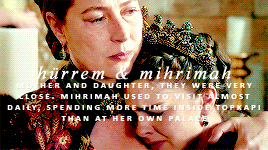



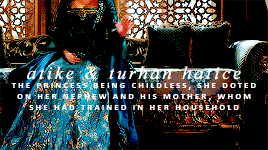
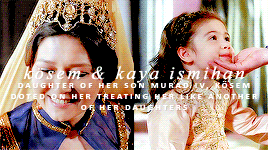


OTTOMANLADIES’ 2ND BIRTHDAY CELEBRATIONS
my favourite female relationships in ottoman history – requested by anon
#history#historyedit#haseki hurrem sultan#mihrimah sultan#safiye sultan#elizabeth i#kosem sultan#kaya ismihan sultan daughter of murad iv#fatma sultan daughter of ahmed i#emetullah rabia gulnus sultan#atike sultan daughter of ahmed i#turhan hatice sultan#esther handali#beyhan sultan daughter of mustafa iii#hatice sultan daughter of mustafa iii#seniha sultan daughter of abdulmecid i#fatma sultan daughter of abdulmecid i#ottomanladiesedit#*requested
772 notes
·
View notes
Photo




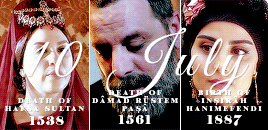
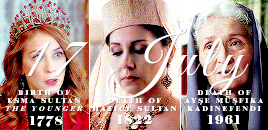




𝐢𝐧 𝐭𝐡𝐞 𝐦𝐨𝐧𝐭𝐡 𝐨𝐟 𝐣𝐮𝐥𝐲 𝐢𝐧 𝐨𝐭𝐭𝐨𝐦𝐚𝐧 𝐡𝐢𝐬𝐭𝐨𝐫𝐲
#history#historyedit#ottoman history#on this day in ottoman history#mahmud ii#mihrimah sultan daughter of mahmud ii#fehime sultan daughter of murad v#mehmed v#esma sultan daughter of abdulhamid i#hatice sultan daughter of mustafa iii#hatice sultan daughter of mehmed iv#murad iii#mehmed i#ottomanladiesedit#*everymonth
115 notes
·
View notes
Note
Princesses who were politically active?
Nefise Melek Hatun: daughter of Murad I, she married Karamânoğlu Alâeddîn Alî Bey and acted as mediator between her father and her husband during the Ottoman-Karaman conflict.
Selçuk Hatun: daughter of Mehmed I, she had a long life in which she acted as ambassador in the conflict between the future Bayezid II and his half-brother Cem
Mihrimah Sultan: daughter of Suleyman I and Hurrem Sultan, she was married to the Grand Vizier but exerted political influence in her own right as well. As a widow, she helped her brother Selim II both politically and economically (lending him money to pay the troops). She also managed the harem for him. Her daughter Ayşe Hümâ-Şâh was influential as well, being married to her father's successor.
Ismihan Sultan: daughter of Selim II, she was married to the Grand Vizier and as such was the most influential among her sisters. She also wrote to Catherine de Medici about some Turkish ladies who had been captured by Frenchmen at sea.
Hatice Sultan: daughter of Mehmed IV, she became her brother Ahmed III's advisor during his reign and she was one of the people who stayed with him until the end.
Fatma Sultan: daughter of Ahmed III, she was regarded as the true power in the Tulip Era. She was married to the Grand Vizier and even entertained foreign ambassadors who wanted to speak with him or with her father.
Esma Sultan the elder: daughter of Ahmed III, she became influential during the reigns of her brothers Mustafa III and Abdülhamid I to the point she was called a new Ismihan Sultan. She also was married to the Grand Vizier. Esma Sultan prevented a coup d’état against Abdülhamid I by warning him that Halil Hamid Paşa planned to depose him in favour of Şehzade Selim
Beyhan and Hatice Sultan: daughters of Mustafa III, they were behind the process of modernization in palace life and were very influential during their half-brother Selim III's reign.
Esma Sultan the younger: daughter of Abdülhamid I, she was Mahmud II's favourite sister even though they had different mothers. She was selected by dissidents as a possible replacement for Mahmud II on the throne.
Seniha Sultan and Fatma Sultan: daughters of Abdülmecid I, they were against Abdülhamid II's rule and tried to free Murad V from Çırağan Palace to put him back on the throne. In this they were helped by their brothers Ahmed Kemaleddin and Selim Süleyman.
Fehime Sultan: daughter of Murad V, she was a supporter of the constitution and composed a piano sonata titled "Pour La Constitution"
I hope I haven’t forgotten anyone. If I did, I’m sorry.
#anon#ask post#ask: ottoman history#nefise hatun daughter of murad i#selcuk hatun daughter of mehmed i#mihrimah sultan#ismihan sultan daughter of selim ii#hatice sultan daughter of mehmed iv#fatma sultan daughter of ahmed iii#esma sultan daughter of ahmed iii#beyhan sultan daughter of mustafa iii#hatice sultan daughter of mustafa iii#esma sultan daughter of abdulhamid i#seniha sultan daughter of abdulmecid i#fatma sultan daughter of abdulmecid i#fehime sultan daughter of murad v
62 notes
·
View notes
Note
Do you think some Sultans got mad if their concubine/consort had girl instead of boy? Or maybe were the women who got mad at themselves? I remember in MC when Hürrem had Mihrimah she was all miserable. I also remember when I watched the Spanish dubbed version of MC, at Mihrimah's wedding during her "I'm Mihrimah" speech she was saying how when a concubine gave birth to a boy it meant she was lucky, with a great future but if she had a girl then it would be the opposite. Was it that deep irl?
Hello! This is so funny because I’ve literally talked about this with some friends recently.
Historically, I don’t think sultans would get mad at the birth of a girl? I guess there could be some kind of disappointment if the dynasty was in danger of disappearing but, when Mustafa III’s daughter Hibetullah Sultan was born, the celebrations were magnificent, lasting ten days and ten nights. Nobody cared that she was a girl, everyone was happy that the dynasty had finally produced a baby after the childless reigns of Mahmud I and Osman III.
I don’t agree with MC view that girls were useless. First of all, a concubine could still go back to the sultan’s bed after the birth of a girl, so she could still have a son in theory. Secondly, princesses were very important in an open succession: Bayezid II reached Istanbul first because the husbands of his daughters had closed the roads to Cem.
Hürrem’s advantage on Mahidevran was (also) having her man inside the Divan, first as vizier and then finally as Grand Vizier. Kösem deeply relied on her sons-in-law to keep her control on the government. Nurbanu, too; her daughters were very influential and all married to important members of the ruling elite. One of Safiye’s sons-in-law was thrice Grand Vizier.
The most powerful women all had at least one princess, so I don’t see why Hürrem should have been disappointed by a daughter; first, she now had a child more than Mahidevran anyway. Secondly, if we take into account Süleyman’s intentions (producing more heirs), he wouldn’t have surely discarded her for having a daughter instead of another son.
Also, Ayşe Hafsa was right there, mother of at least two daughters. Historical Hafsa had at least three daughters before having Süleyman, so becoming Valide Sultan didn’t rest on having a son first. To be honest, I would even argue that one prince and just one prince would become a disadvantage in the long run; or at least it would be against a prince with sisters.
Speaking cynically, a princess wouldn’t get you benefits right away but in the long run she could become instrumental.
#anon#ask post#ask: ottoman history#ask: magnificent century#haseki hurrem sultan#hibetullah sultan daughter of mustafa iii#mihrimah sultan#ayse hafsa sultan
130 notes
·
View notes
Photo










𝐢𝐧 𝐭𝐡𝐞 𝐦𝐨𝐧𝐭𝐡 𝐨𝐟 𝐬𝐞𝐩𝐭𝐞𝐦𝐛𝐞𝐫 𝐢𝐧 𝐨𝐭𝐭𝐨𝐦𝐚𝐧 𝐡𝐢𝐬𝐭𝐨𝐫𝐲
#history#historyedit#ottoman history#ottomanladiesedit#*everymonth#kosem sultan#suleyman i#emine sultan daughter of mustafa ii#murad iv#mustafa iv#mihrimah sultan daughter of mahmud ii#fatma ulviye sultan daughter of mehmed vi#haseki hatice muazzez sultan#mara hatun#fehime sultan daughter of murad v#seniha sultan daughter of abdulmecid i#sevkefza sultan#hibetullah sultan daughter of mustafa iii#aliye sultan daughter of murad v#selim i#saliha sultan#murad v#abdulhamid ii#fatma sultan daughter of ahmed iii#hanzade sultan daughter of ahmed i#servetseza kadin#ayse sultan daughter of mustafa ii#hatice sultan daughter of ahmed iii
140 notes
·
View notes
Text
International Known Queens & Empresses (4/?)
Haseki Hürrem Sultan


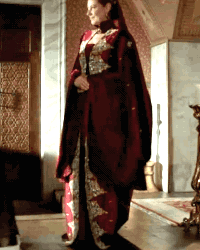

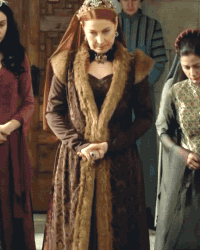


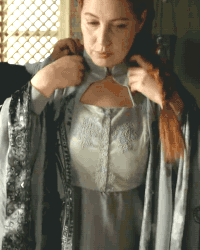


Daughter of Lisovsky (?)
Wife (Haseki Sultan) of Suleiman the Magnificent
Mother of Sehzade Mehmed, Mihrimah Sultan, Sehzade Abdullah, Sultan Selim II, Sehzade Bayezid, and Sehzade Cihangir
Grandmother of Ayse Hümasah Sultan, Sultanzade Osman (Mihrimah), Sultan Murad III, Sehzade Mehmed (Selim), Sehzade Abdullah (Selim), Sehzade Cihangir (Selim), Sehzade Mustafa (Selim), Sehzade Suleiman (Selim), Ismihan Sultan (Selim), Gevherhan Sultan (Selim), Sah Sultan (Selim), Fatma Sultan, Sehzade Orhan, Sehzade Osman (Bayezid), Sehzade Abdullah (Bayezid), Sehzade Mahmud (Bayezid), Mihrümah Sultan (Bayezid), Hatice Sultan (Bayezid), Ayse Sultan (Bayezid), and Hanzade Sultan (Bayezid)
12 notes
·
View notes
Photo








On this day in Ottoman history - 18 June 1811 - Saliha Sultan was born:
Saliha Sultan was the eldest daughter of Mahmud II's to reach adulthood. Her mother was Second Imperial Consort Âşûb-i Cân Kadınefendi, though at the time of her birth - on 18 June 1811 - she was the fifth Imperial Consort. Uluçay claims she was born on 17 April 1811, instead.
Saliha was educated with her younger half-sister Mihrimah Sultan (b. 1812) and got married only at the age of 23, most probably due to health problems. Her father Mahmud II chose Halîl Rif’at Paşa for her, and the wedding was held in March 1834. The couple settled in Fındıklı Palace, though Öztuna claims that she had been left Neşâtâbâd Palace by her great-aunt Hatice Sultan (daughter of Mustafa III), and it was there that she lived with her husband.
Though her marriage was not happy, she had three children with Halîl Rif’at Paşa: Sultân-zâde ‘Abdü’l-Hamîd Beyefendi (2.3.1835 – 3.1837), for whose birth a great celebration was held: after the Imperial Family (in six open carriages) had arrived, Saliha Sultan appeared on the terrace of her palace with a large entourage and the head nurse carrying the young infant. For his birth, Mahmud II had ordered cannons to be fired and ministers “had been admitted to the Presence on audiences of congratulation.” Sultân-zâde Câvid Beyefendi (1837?-?), who was buried in the mausoleum of Mahmud II. As for her only daughter, Ayşe Sıdıka Hanım-Sultân, there are no dates of birth nor death, but she certainly reached adulthood because she married Server Paşa, son of Sa’îd Server Efendi.
Saliha Sultan died on 5 February 1843 in Neşâtâbâd Palace and was either buried in the mausoleum of Mahmud II or in her grandmother Nakşıdil Valide Sultan's. After her death, Halîl Rif’at Paşa remarried and by his third wife had Dâmâd Âsaf Mahmûd Celâleddîn Paşa, who would later marry Seniha Sultan, daughter of Abdülmecid I. Through his first marriage Halîl Rif’at Paşa was related to another Ottoman princess, Cemile Sultan: his grandson Alî Fuâd Paşa married Cemile Sultan's daughter, also called Ayşe Sıdıka Hanım-Sultân.
sources: Julia Pardoe - The City of the Sultan, M. Çağatay Uluçay - Padişahların Kadınları ve Kızları, Necdet Sakaoğlu - Bu Mülkün Kadın Sultanları, Yılmaz Öztuna - II. Sultan Mahmud
#history#historyedit#ottoman history#on this day in ottoman history#saliha sultan daughter of mahmud ii#ottomanladiesedit
117 notes
·
View notes